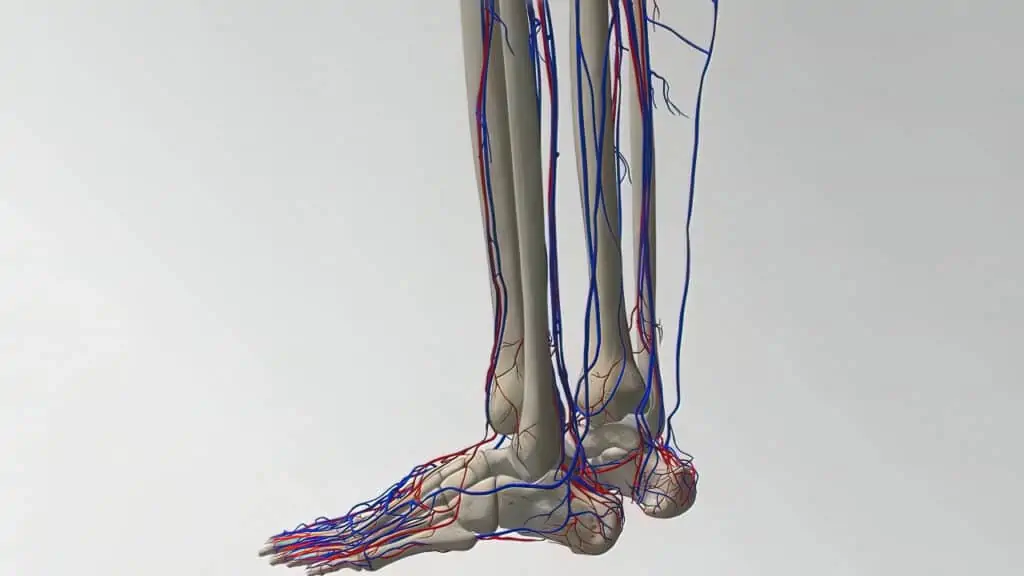You may recall learning about veins in high school biology class. But there’s more to veins than meets the eye. Veins are vital because they transport blood and oxygen to your organs.
If you love discovering new facts about the human body, here are 12 fascinating facts about veins.
1. Your Blood Vessels Are Long Enough To Circle the Globe More Than Twice
According to the National Institute of Aging, when you stretch out the veins, capillaries, and arteries, they would measure 60,000 miles in a child and 100,000 miles in an adult. The earth’s circumference is about 24,000 miles, meaning a baby’s blood vessels could circle the globe more than twice.
2. Veins Have 3 Layers
Although veins are small, they have three layers:
- Tunica adventitia – a tough outer layer. It contains tiny vessels and nerves.
- Tunica media – the middle layer with elastic fibers and smooth muscles; it ensures your blood flows in a single direction.
- Tunica intima – the innermost layer that comes in contact with your blood; it has a hollow center and several smooth cells.
3. Women Are More Prone To Varicose Veins Than Men
ResearchGate shows that the prevalence of varicose veins is 10% in men and 28% in women, increasing as both groups age. Women are at a higher risk since certain hormonal factors, such as puberty, menopause, and pregnancy can contribute to the disease.

4. The Weather Affects Your Veins
During hot weather, your veins expand to release excess heat, allowing your body to cool down. That’s why your veins ‘bulge out’ after strenuous exercise. On cold days, your veins contract and hide deeper in your skin to preserve your body’s heat.
5. The Longest Vein in the Body
The great Saphenous vein is, not the superficial vein, but the body’s longest vein. It runs from the top of your foot to the upper thigh and groin. The vein is also a major cause of varicose veins, a condition of enlarged and dilated veins.
If you have a heart condition and there are no available arterial grafts, your doctor can remove the great Saphenous and use it for autotransplantation in the coronary artery.
6. Obesity Can Lead to Varicose Veins
Extra body fat, rather than a healthy weight, puts pressure on your veins, making it difficult to pump blood back to your heart. This constant pressure eventually strains your heart and can cause your valves to fail, resulting in blood flowing backward and pooling around your legs and leg veins.
7. Veins Circulate Gallons of Blood-/
For an average adult, veins circulate about 2,000 gallons of blood daily to all body organs. That’s enough blood to fill four to five hot tubs. Veins also hold 70% of the blood in our bodies at any given time.
8. Caius Marius Had Varicose Vein
The first documented case of varicose veins was in 86 BC, when Caius Marius, the Roman general, wrote texts describing his pain. At the time, he had varicose veins on both legs and turned to archaic surgical methods for relief. However, the surgery was unsuccessful.
9. Taller People are at a Higher Risk of Developing Varicose Veins
A Stanford University School of Medicine studey concluded that the taller a person is, the more likely they are to develop varicose veins. This is mainly due to gravity. Blood from the legs of taller people travels further to the heart, forcing the veins to work harder than in shorter people.
10. Tall Animals Like Giraffes Are Immune to Varicose Veins
One would think that animals, particularly the tall giraffe, would be prone to varicose veins.
However, the giraffe has veins and arteries at the center of its legs. They also have tight, thick skin that moves blood against gravity and avoids blood pooling on their legs which help with the deep veins.
11. Excessive Sugar Consumptions Can Cause Varicose Veins
Sugar absorbs water in your body, causing your vein walls to expand. Once the blood sugar stabilizes, your veins return to their normal size. This constant expansion and contraction of your veins may cause them to lose elasticity, resulting in a backflow of blood, varicose veins, venous insufficiency, or venous disease.
12. Chocolate Is Good for Your Veins
Dark chocolate contains polyphenols that help your body form nitric oxide, which makes your veins dilate and enable blood to flow more easily. However, don’t go overboard and indulge in dark chocolate since it’s also high in calories.
Bottom Line
At East Bay, we understand how painful and challenging vein-related issues can be. That’s why we focus on providing pain relief and care treatment to all our patients. If you’re looking for medical relief for vein-related problems, call Dr. Albert Malvehy (925) 494-0898 to schedule a consultation or book an appointment. Feel free to visit our offices in San Francisco/Oakland area
SOURCES:
https://www.nia.nih.gov/
https://www.researchgate.net/figure/The-prevalence-of-varicosity-in-different-age-groups-an-increase-with-advancing-age-is_tbl1_51535079
https://med.stanford.edu/news/all-news/2018/09/height-may-be-risk-factor-for-varicose-veins.html#:~:text=The%20taller%20you%20are%2C%20the,common%20but%20little%20understood%20condition



